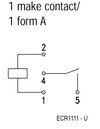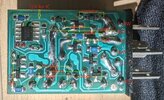I am thinking of modifying my car's flasher relay that utilizes U643B, not sure if possible, but from its datasheet it seems one should be able to use it for any load >= 1W. In my car this is being used for for a total of 63W/side (3 bulbs) or 126W in Hazard warning mode. I tried to label all TH components that are on the other side of the board for reference including the pins for both relays (color coded). Hope someone can find the "shunt resistor" as shown in the IC datasheet or a way to modify this to stop hyperflashing when I switch to LED bulbs.
LS< = Left turn signal from switch
LS> = Left turn signal power to bulbs
HW = Hazard Warning signal from switch
thanks
LS< = Left turn signal from switch
LS> = Left turn signal power to bulbs
HW = Hazard Warning signal from switch
thanks



